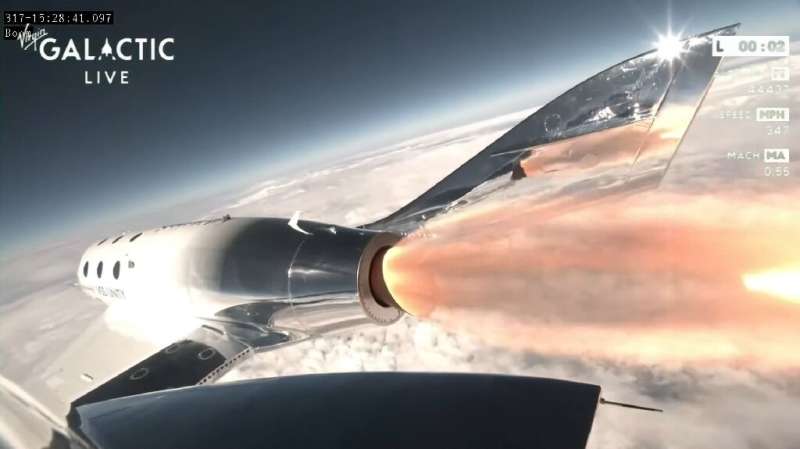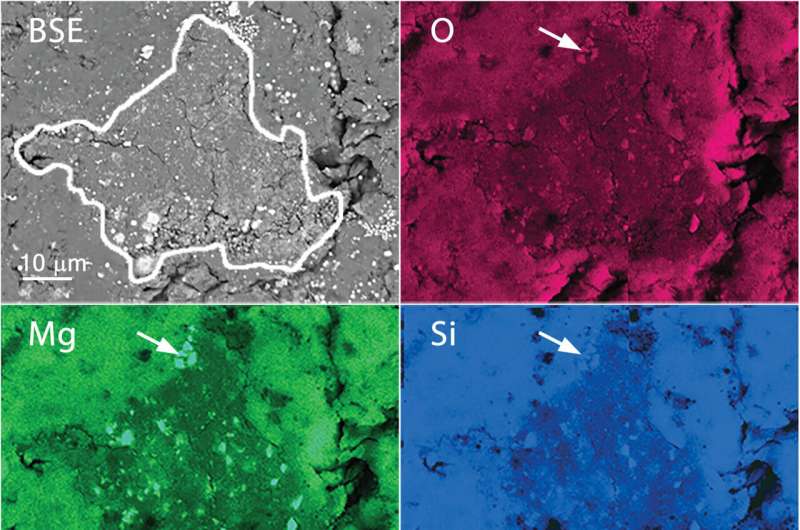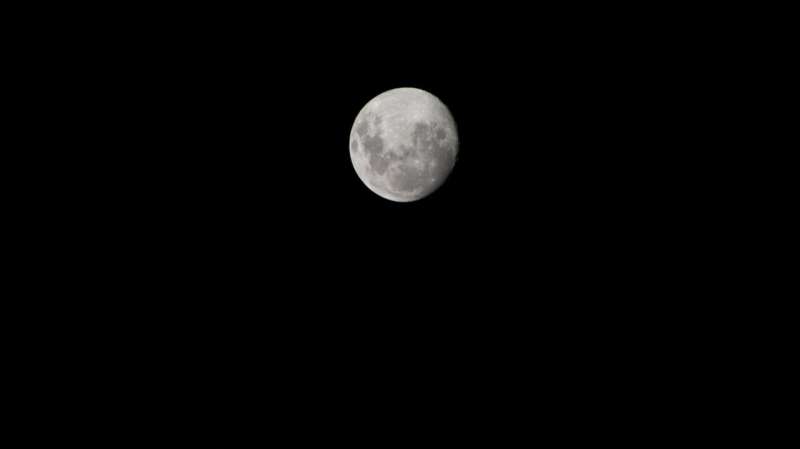
Copernical Team
Orbit and Viasat collaborate to merge airborne terminals with expansive Ka-band Network
 Netanya, Israel (SPX) Jul 18, 2023
Orbit Communications Systems Inc., a supplier of SATCOM terminals, tracking ground station solutions, and crucial airborne audio management systems, has announced a cooperation agreement with Viasat Inc. This new alliance will see Orbit's airborne terminals integrated into Viasat's expanded Ka-band network, a vast framework which now encompasses the Global Xpr
Netanya, Israel (SPX) Jul 18, 2023
Orbit Communications Systems Inc., a supplier of SATCOM terminals, tracking ground station solutions, and crucial airborne audio management systems, has announced a cooperation agreement with Viasat Inc. This new alliance will see Orbit's airborne terminals integrated into Viasat's expanded Ka-band network, a vast framework which now encompasses the Global Xpr Experimental Phase commences for china's groundbreaking solar telescope array
 The National Space Science Center of the Chinese Academy of Sciences has announced the beginning of experimental observation for its cutting-edge solar telescope array located in Southwest China. The array, known as the Daocheng Solar Radio Telescope (DSRT), is an integral component of China's Meridian Project's second phase.
Positioned in Daocheng county, Sichuan province, the DSRT is an
The National Space Science Center of the Chinese Academy of Sciences has announced the beginning of experimental observation for its cutting-edge solar telescope array located in Southwest China. The array, known as the Daocheng Solar Radio Telescope (DSRT), is an integral component of China's Meridian Project's second phase.
Positioned in Daocheng county, Sichuan province, the DSRT is an Astronomers discover striking evidence of 'unusual' stellar evolution
 Astronomers have found evidence that some stars boast unexpectedly strong surface magnetic fields, a discovery that challenges current models of how they evolve.
In stars like our sun, surface magnetism is linked to stellar spin, a process similar to the inner workings of a hand-cranked flashlight. Strong magnetic fields are seen in the hearts of magnetic sunspot regions, and cause a varie
Astronomers have found evidence that some stars boast unexpectedly strong surface magnetic fields, a discovery that challenges current models of how they evolve.
In stars like our sun, surface magnetism is linked to stellar spin, a process similar to the inner workings of a hand-cranked flashlight. Strong magnetic fields are seen in the hearts of magnetic sunspot regions, and cause a varie XRISM mission to study 'rainbow' of x-rays
 A new satellite called XRISM (X-ray Imaging and Spectroscopy Mission, pronounced "crism") aims to pry apart high-energy light into the equivalent of an X-ray rainbow. The mission, led by JAXA (Japan Aerospace Exploration Agency), will do this using an instrument called Resolve.
XRISM is scheduled to launch from Japan's Tanegashima Space Center on Aug. 25, 2023 (Aug. 26 in Japan).
"Re
A new satellite called XRISM (X-ray Imaging and Spectroscopy Mission, pronounced "crism") aims to pry apart high-energy light into the equivalent of an X-ray rainbow. The mission, led by JAXA (Japan Aerospace Exploration Agency), will do this using an instrument called Resolve.
XRISM is scheduled to launch from Japan's Tanegashima Space Center on Aug. 25, 2023 (Aug. 26 in Japan).
"Re When ET calls, can we be sure we're not being spoofed?
 Scientists have devised a new technique for finding and vetting possible radio signals from other civilizations in our galaxy - a major advance in the search for extraterrestrial intelligence (SETI) that will significantly boost confidence in any future detection of alien life.
Most of today's SETI searches are conducted by Earth-based radio telescopes, which means that any ground or satel
Scientists have devised a new technique for finding and vetting possible radio signals from other civilizations in our galaxy - a major advance in the search for extraterrestrial intelligence (SETI) that will significantly boost confidence in any future detection of alien life.
Most of today's SETI searches are conducted by Earth-based radio telescopes, which means that any ground or satel Virgin Galactic's next spaceflight will include sweepstakes winners

Virgin Galactic's next spaceflight will include a mother-daughter duo from the Caribbean who won their tickets in a sweepstakes contest, as well as an 80-year-old former Olympian.
The company founded by British billionaire Richard Branson flew its first paying customers, members of the Italian Air Force, last month—a long awaited achievement that put it back on track in the emerging private spaceflight sector.
Its next mission "Galactic 02,' is planned for August 10 from Spaceport America, New Mexico, the company said in a statement.
Preserved presolar silicate grains found in Ryugu samples

New NASA Artemis instruments to study volcanic terrain on the moon

As part of NASA's regular cadence of robotic lunar missions through Artemis, the agency has selected a new scientific payload to establish the age and composition of hilly terrain created by volcanic activity on the near side of the moon.
The DIMPLE instrument suite, short for Dating an Irregular Mare Patch with a Lunar Explorer, will investigate the Ina Irregular Mare Patch, discovered in 1971 by Apollo 15 orbital images. Learning more about this mound will address outstanding questions about the evolution of the moon, which in turn can provide clues to the history of the entire solar system.
DIMPLE is the result of the third annual proposal call for PRISM (Payloads and Research Investigations on the Surface of the Moon), which sends science investigations to the moon through a NASA initiative called CLPS, or Commercial Lunar Payload Services. This PRISM call was the first that allowed proposers to choose and justify a particular landing site for conducting high-priority lunar science investigations.
"This commercial payload delivery initiative is helping to provide a burst of lunar science and exploration," said Nicola Fox, associate administrator for science at NASA Headquarters in Washington.
China has begun launching its own satellite internet network

Since 2019, Elon Musk and SpaceX have led the charge to create high broadband satellite internet services. As of May 2023, the Starlink constellation consisted of more than 4,000 satellites operating in Low Earth Orbit (LEO) and roughly 1.5 million subscribers worldwide. Several competitors began launching constellations years before Starlink began, and several companies have emerged since. This includes HughesNet, OneWeb, and Amazon's Kuiper Systems. But Starlink's latest challenger could be its most fearsome yet: a company in China backed by the Beijing government.
On Sunday, July 9, a prototype internet satellite was launched aboard a Long March 2C carrier rocket from China's Jiuquan Satellite Launch Center in Inner Mongolia. The satellite has since entered a predetermined orbit, where it will conduct several tests to validate the broadband satellite technology.
NASA's first new wind tunnel in 40 years will turn science fiction to fact

Flying cars. Space tourism. Safe reentry for astronauts coming back from Mars.
These technologies are still science fiction, but some won't be for much longer, according to Charles "Mike" Fremaux, NASA Langley Research Center's chief engineer for intelligent flight systems.
To test these concepts, particularly in regard to public and military safety, NASA Langley is building its first new wind tunnel in over 40 years. The NASA Flight Dynamic Research Facility, a project Fremaux has been pursuing for 25 years, will replace two smaller wind tunnels that are around 80 years old. The center's most recent and largest, the National Transonic Facility, was built in 1980.
"These facilities are really kind of tailor-made for doing a lot of that work," he said at a presentation at the Virginia Air & Space Science Center in Hampton on Tuesday. The talk was part of NASA Langley's Sigma Series community lectures.
"That's not our traditional wheelhouse. We haven't tested anything with a propeller on it in decades."
That's because many new craft will depend on electric vertical takeoff and landing, or "eVTOL," technology.
